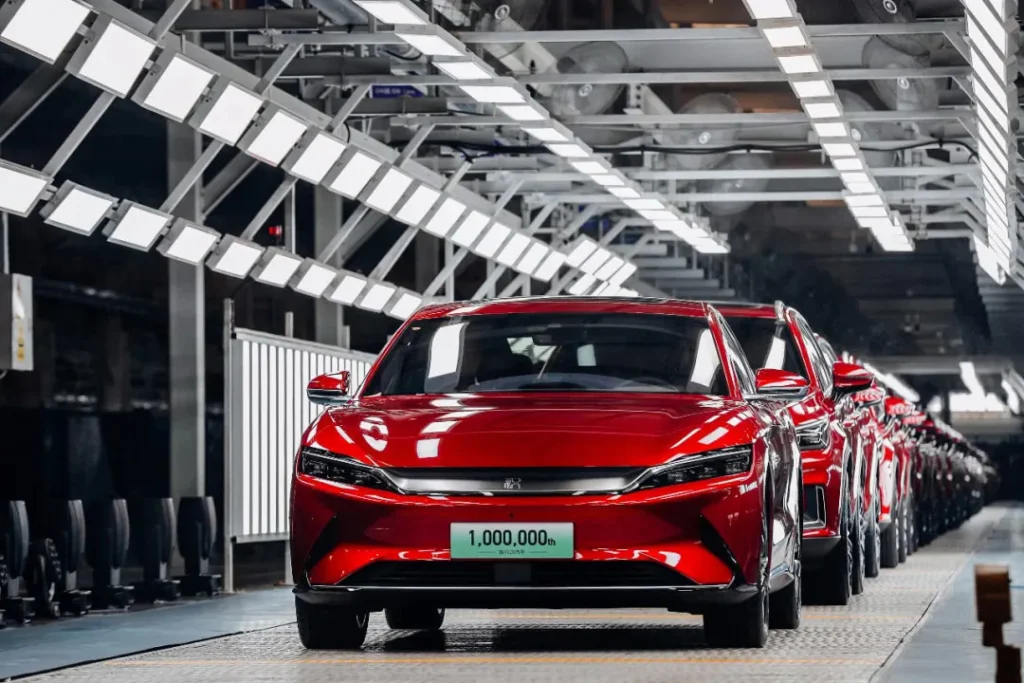China’s EV revolution is driving the nation’s ascent as a worldwide technological leader, not merely disrupting the auto industry. With aggressive investments in electric mobility, artificial intelligence, and autonomous systems, China is silently shaping a bold new industrial future. A Tech Revolution That You Can’t See

As the world tries to solve the climate problem, China’s electric vehicle (EV) industry is slowly changing what it means to be an industrial power. Record-high sales of electric vehicles and previously unheard-of funding for AI, clean energy, and automation point to a major shift in the world’s technology leadership. Could 2024 be a turning point?
🌍 Widespread Use and Pricing
China is currently the biggest market for electric cars, buying more than 60% of all cars sold worldwide. This growth is the result of a mix of government benefits, strict emission standards, and never-ending inventions in the United States. Instead of just meeting local needs, companies like BYD, XPeng, and NIO are changing the story of EVs around the world.
The use of AI in everything from smart cities to cars
China’s huge growth in electric vehicles (EVs) is linked to AI. AI is at the heart of everything from saving energy and predicting repair needs to fully self-driving cars. Self-driving taxis are already on the road in Shenzhen and other big cities, turning city streets into real-life AI study labs.
Advances in storing energy and making batteries
China is in charge of the whole battery supply chain, from mining lithium to making cells and reusing them. With this vertical control, CATL and BYD are at the forefront of developing solid-state batteries and ultra-fast charging technologies, which sets the bar for EV energy storage around the world.
Strategic Partnerships and Effects Around the World
China’s electric vehicle (EV) environment is growing not only in China but also around the world. Deals with South American and African countries with lots of lithium-rich rocks ensure that there will be long-term supply lines, and exports to Europe and Southeast Asia are through the roof. When you work with Western makers, you can see a new phase of innovation that depends on each other.
Challenges and Strategic Opportunities: ■️ Even though China is the world’s biggest power, it has real problems, such as problems with intellectual property, more limits on technology around the world, and shifting geopolitical dynamics. Its long-term plan, strong infrastructure, and ability to adapt to new ideas keep pushing the limits of what is possible.
✠ Behind the Wheel: What China Came To
China’s electric vehicle (EV) revolution changes more than just transportation. It changes energy, intelligence, and impact. As the world moves toward a future with connected devices and electricity, China is not just following; it is driving.





